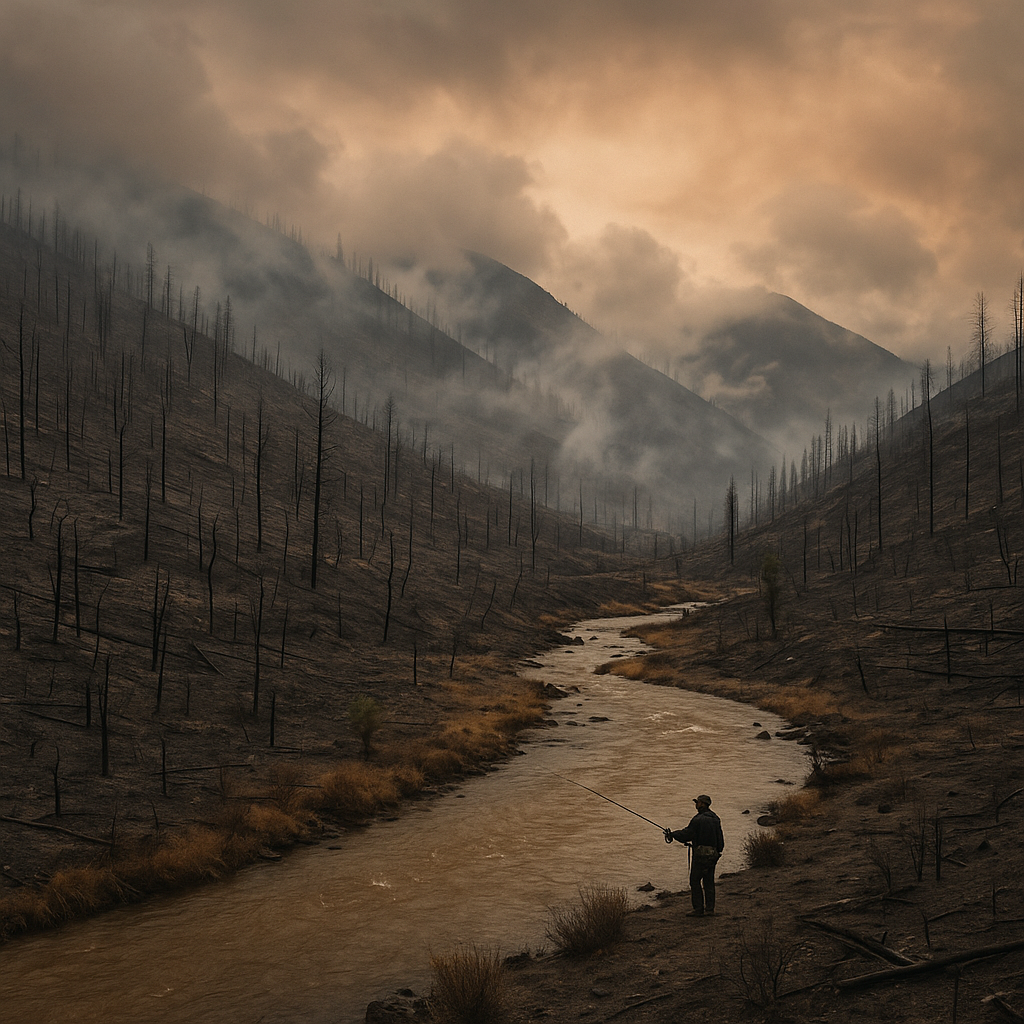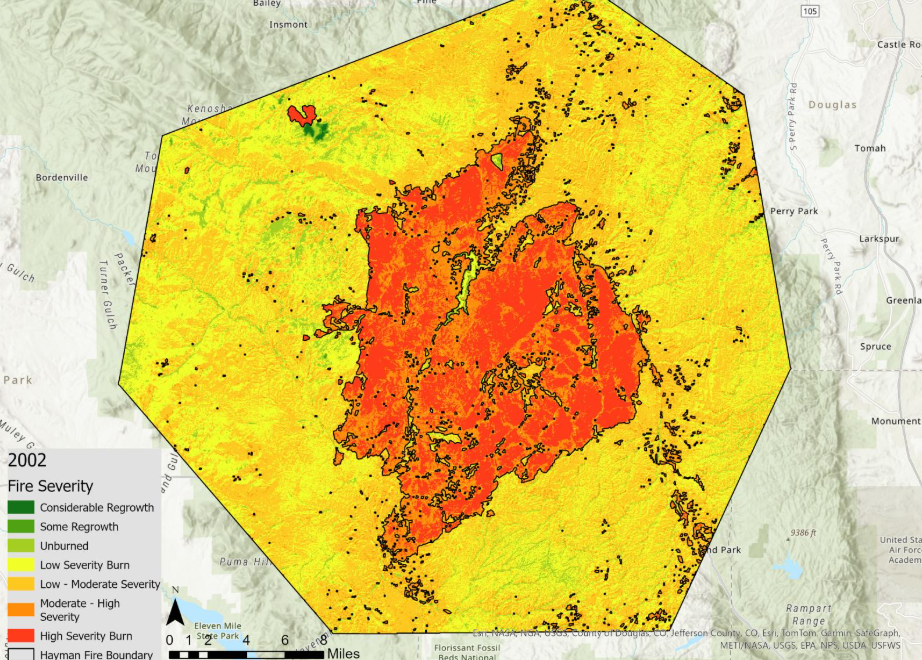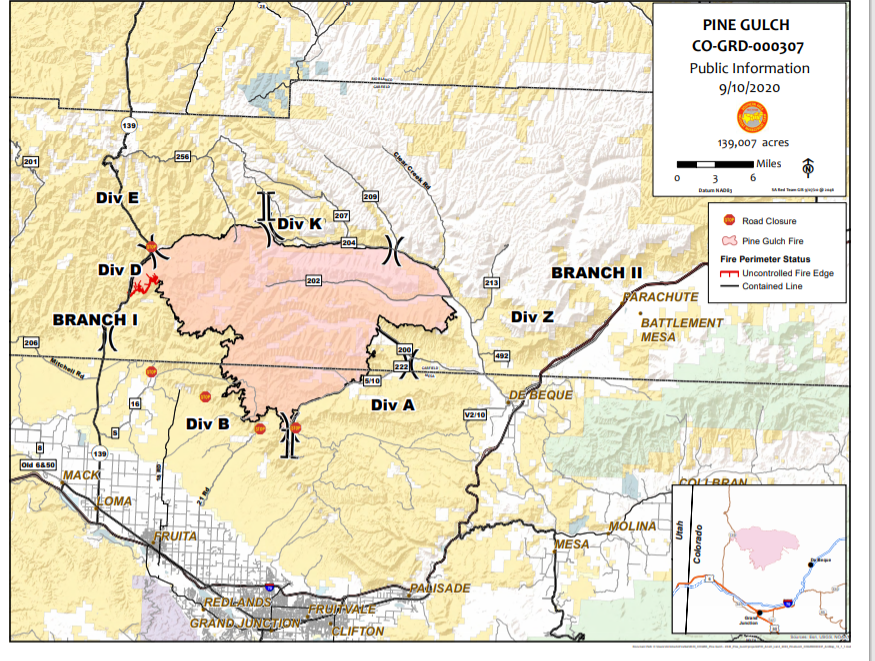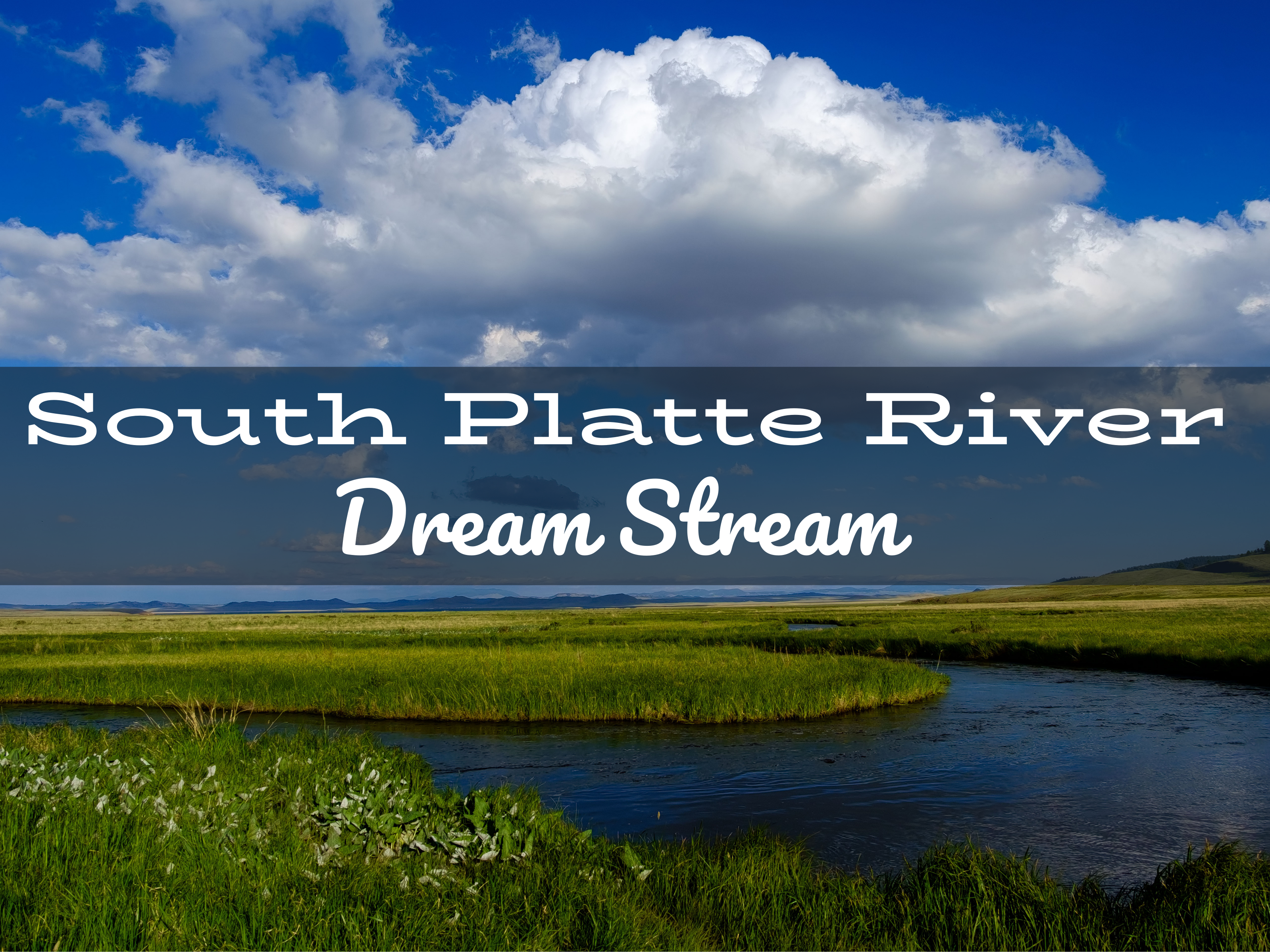Colorado’s wildfire seasons are becoming longer and more destructive, and the impacts reach far beyond the forests. For anglers, wildfires don’t just close campgrounds or trailheads—they can reshape rivers and fish populations for years to come. Here’s a deep look at what sparks these fires and how they change fishing across the state.

What Starts Wildfires in Colorado?
1. Human Activity
Roughly nine out of ten Colorado wildfires are caused by people. Common culprits include unattended campfires, fireworks, tossed cigarettes, sparks from vehicles or equipment, and downed power lines.
2. Lightning Strikes
Natural ignition sources remain a factor, especially in the high country during summer storm season. A single strike in a dry canyon can set thousands of acres ablaze.
3. Climate and Weather Conditions
- Drought and Snowpack Decline: Earlier snowmelt and longer dry spells create extended fire seasons.
- Fuel Build-Up: Years of fire suppression leave behind thick, dry vegetation ready to burn.
- High Winds: Chinook and mountain-wave winds can push flames across ridges and communities at astonishing speeds.
- Climate Change: Warming temperatures and prolonged droughts have intensified the frequency and severity of fires.
Recent Wildfires in Colorado (2025)
Colorado has seen an intense fire season this year, with multiple large wildfires sparked primarily by lightning. Here are the main ones:
- Lee Fire – Started August 2 near Meeker in Rio Blanco County. This is the largest fire of the year so far, burning about 138,800 acres.
- Elk Fire – Also began August 2 near Meeker and Buford. Burned roughly 14,500 acres before being fully contained.
- Turner Gulch Fire – Started July 12 east of Gateway in Mesa County. Scorched about 31,700 acres and is nearly contained.
- Stoner Mesa Fire – Began July 28 northeast of Cortez in Montezuma County. Has burned about 10,200 acres and is only partially contained.
- Other Fires – Several smaller lightning-caused fires also flared up this summer, including the South Rim Fire (4,200 acres), Sowbelly Fire (2,200 acres), Twelve Fire (4,300 acres), and the US 160 Fire in Las Animas County (2,200 acres).
Top 5 Largest Wildfires in Colorado History
1. Cameron Peak Fire (2020) — ~208,900 acres
The largest wildfire in Colorado history. It burned through the Poudre Canyon and Roosevelt National Forest, destroying hundreds of homes and leaving lasting damage to watersheds that feed the Cache la Poudre River.
2. East Troublesome Fire (2020) — ~193,800 acres
Known for its explosive growth — spreading nearly 100,000 acres in a single day. It burned through Grand County, jumped the Continental Divide, and threatened Estes Park and Rocky Mountain National Park.
3. Pine Gulch Fire (2020) — ~139,000 acres
Sparked by lightning near Grand Junction, this fire consumed vast stretches of the Western Slope. Its sheer size and remoteness made suppression challenging, and it briefly held the “largest fire” record before Cameron Peak surpassed it.
Grand Junction, CO Weather Forecast Office
4. Lee Fire (2025) — ~138,800 acres
The most significant blaze of 2025 so far, burning in northwestern Colorado near Meeker. Driven by lightning and dry summer conditions, it has become the fourth-largest wildfire in state history.
5. Hayman Fire (2002) — ~138,100 acres
For nearly two decades, this was Colorado’s largest fire. Centered southwest of Denver, it devastated forests in the South Platte watershed. Its impacts are still felt today, with ongoing sedimentation and water-quality challenges affecting both fisheries and municipal water supplies.

Colorado Fires with Lasting Effects
- Cameron Peak Fire (2020) — Colorado’s largest recorded wildfire, burning more than 200,000 acres and leaving massive burn scars above major watersheds.
- East Troublesome Fire (2020) — Nearly 200,000 acres destroyed near the headwaters of the Colorado River, putting critical trout streams at risk.
- Pine Gulch Fire (2020) — Sparked by lightning, this blaze consumed more than 130,000 acres on the Western Slope.
- Marshall Fire (2021) — While not a forest fire, its wind-driven spread showed how vulnerable Colorado is to fast-moving flames.
How Wildfires Affect Fishing and Rivers
1. Fish Mortality
Extreme heat near streams can raise water temperatures beyond trout tolerance. After fires, heavy rains often wash ash and debris into rivers, suffocating fish and wiping out entire stretches.
2. Habitat Loss and Alteration
Burned hillsides lead to erosion. Sediment fills pools, buries spawning gravel, and alters river channels. Fallen trees may block migration routes and change how fish move through a system.
3. Water Quality Problems
- Sediment and Ash clog spawning beds and reduce oxygen.
- Chemical Changes from burned soils alter pH, sometimes creating toxic conditions.
- Loss of Insects means fewer mayflies, caddis, and stoneflies—leaving trout with less to eat.
4. Native Trout Vulnerability
Colorado’s cutthroat trout, which often live in isolated headwater streams, are especially vulnerable. A single wildfire can erase decades of recovery work for a small population.
5. Impacts on Reservoirs and Supplies
Sediment from burn scars often fills reservoirs, reducing storage and straining water treatment. For anglers, this means reduced clarity, altered flows, and limited access to once-productive fisheries.
Quick Reference: Wildfire Impacts on Fishing
| Factor | Effect on Rivers & Fishing |
|---|---|
| Fire Ignition | Mostly human-caused, some lightning |
| Water Temperature | Spikes can kill trout directly |
| Sediment & Ash | Smother eggs, fry, and clog fish gills |
| Habitat Alteration | Loss of pools, migration barriers |
| Water Chemistry | Shifts in pH, oxygen, and toxicity |
| Invertebrate Loss | Reduces key trout food sources |
| Trout Vulnerability | Native cutthroat at high risk |
| Reservoir Effects | Less capacity, murkier water, reduced access |
Final Thoughts
Wildfires are now an inseparable part of Colorado’s outdoor reality. For anglers, the consequences go beyond closed trails or smoky skies—they change river ecosystems for years to come. From fish kills to habitat shifts, the effects ripple downstream long after the flames are out. Protecting watersheds, restoring riparian zones, and monitoring native trout will be essential if Colorado’s world-class fisheries are to remain resilient.
.png?width=300&height=100&name=Copy%20of%20Rise%20Beyond%20Logo%2012.31.24%20(300%20x%20100%20px).png)
.png)



